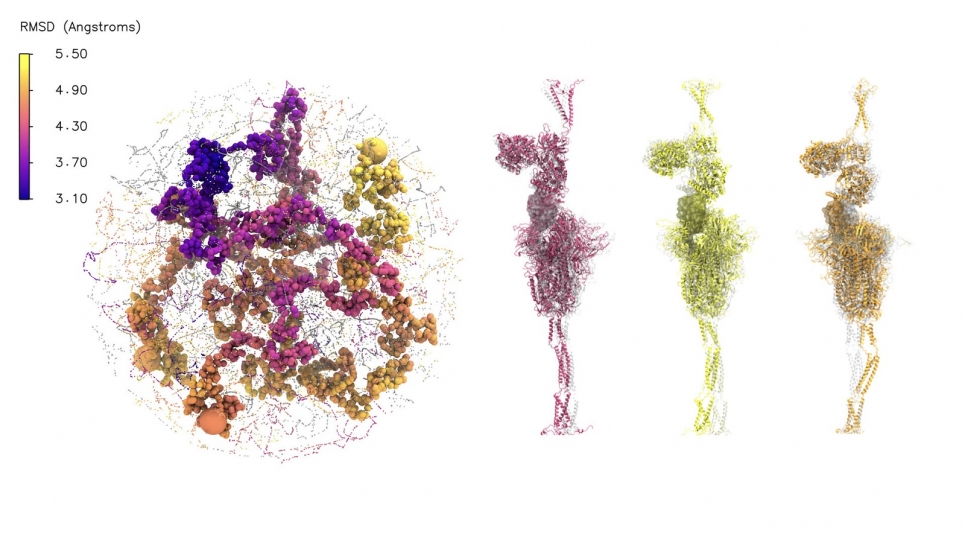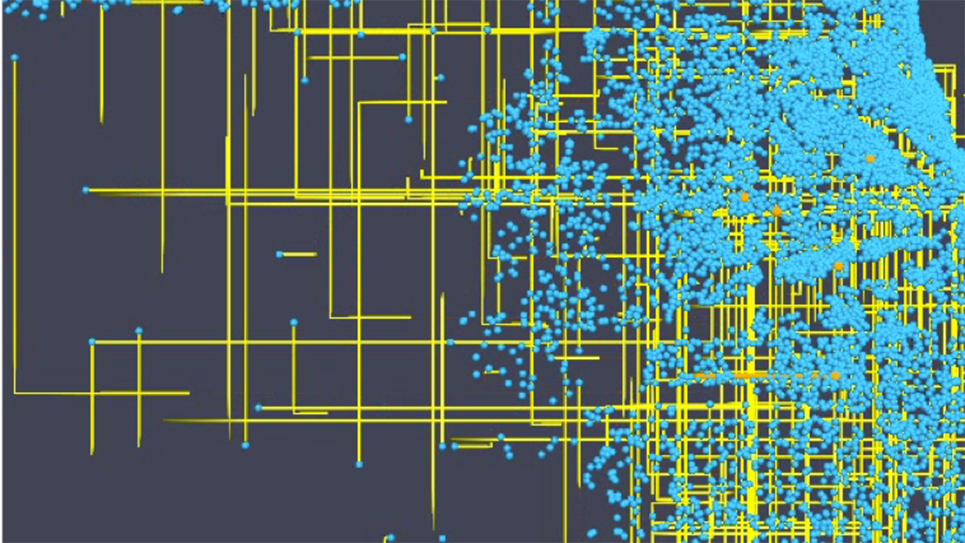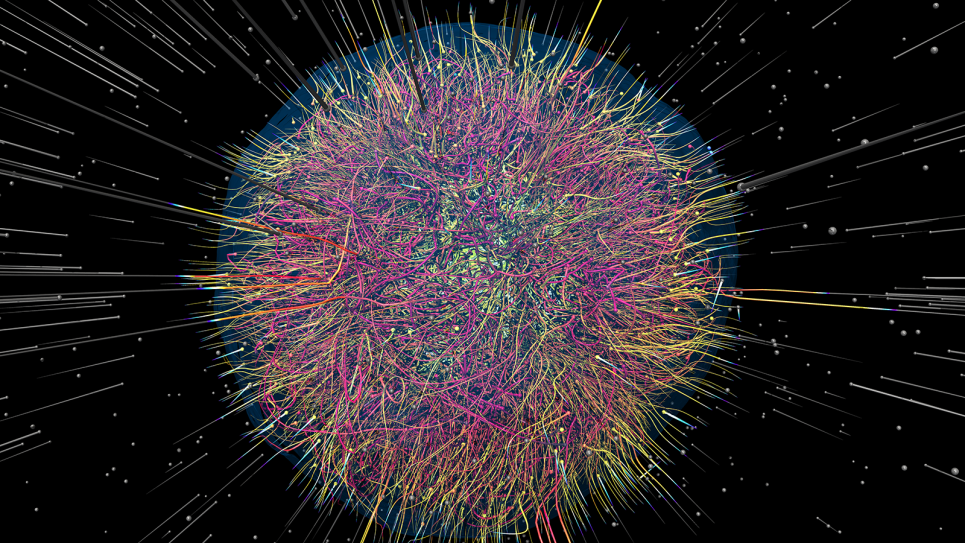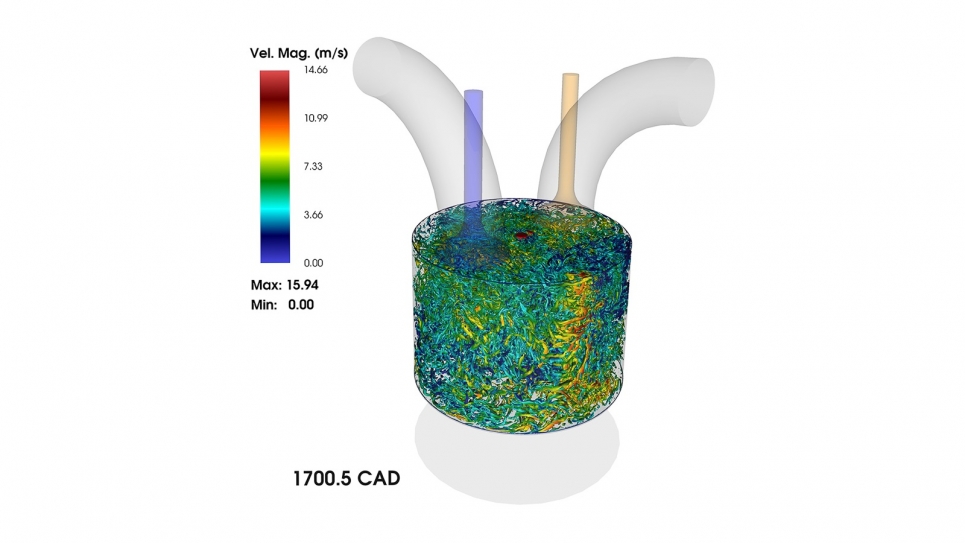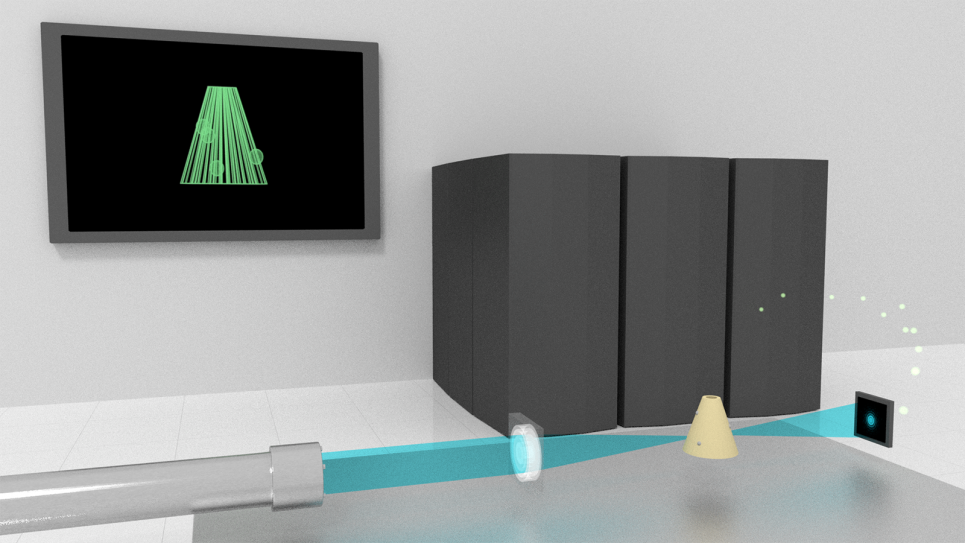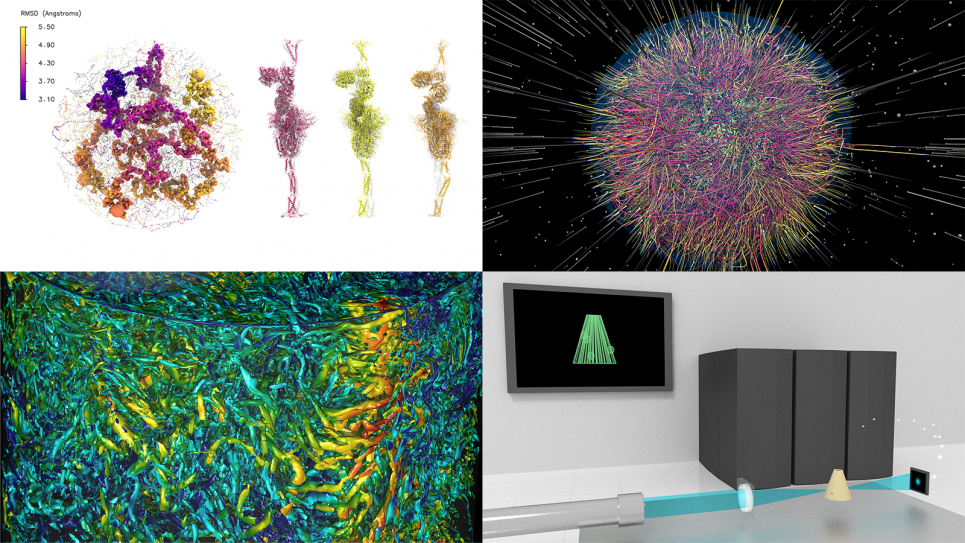
ALCF supercomputers power scientific breakthroughs in 2020
Over the past year, ALCF supercomputing resources have enabled a number of impactful studies and publications across scientific disciplines.
In 2020, researchers from across the world leveraged supercomputers at the U.S. Department of Energy’s (DOE) Argonne National Laboratory to accelerate discovery and innovation in a wide range of scientific disciplines.
From improving our understanding of COVID-19 to simulating supernovae and combustion engines in greater detail than ever before, research projects supported by the Argonne Leadership Computing Facility (ALCF), a DOE Office of Science User Facility, continued to advance the frontiers of scientific computing.
As 2021 approaches, we take a look back at some of the noteworthy research accomplished by ALCF users over the past year.
Shedding light on the coronavirus
A multi-institutional team led by researchers from Argonne and the University of California, San Diego, carried out AI-driven simulations on multiple supercomputing resources, including the ALCF’s Theta system, to unravel the fundamental biological mechanisms of the SARS-CoV-2 virus while also identifying potential therapeutics to treat COVID-19. The team’s massive simulations on Summit at the Oak Ridge Leadership Computing Facility, a DOE Office of Science User Facility, were recognized with the Association for Computing Machinery’s (ACM) first Gordon Bell Special Prize for High Performance Computing-Based COVID-19 Research.
Enabling real-time analysis of COVID-19 proteins
Argonne researchers developed a pipeline between the ALCF and the Advanced Photon Source (APS) to connect supercomputers with X-ray beamline experiments that elucidate viral chemistry with a technique known as serial synchrotron crystallography, thereby enabling on-demand analysis of the crystal structure of coronavirus proteins. With data transfers achieving speeds of 700 megabytes per second, the pipeline has made it possible to deliver instantaneous feedback to experimentalists. The APS is a DOE Office of Science User Facility located at Argonne
Simulating the spread of COVID-19
Argonne researchers used ALCF computing resources to model the spread of COVID-19 throughout Chicago. Known as CityCOVID, the team’s large-scale agent-based epidemiological model is capable of simulating the movements of millions of individuals, or agents, as they go about their daily activities. Over the course of the pandemic, the team has been using CityCOVID to support city, county, and state stakeholders by providing them with model forecasts. The team’s work on Theta was recognized as a finalist for the ACM Gordon Bell Special Prize for High Performance Computing-Based COVID-19 Research.
Providing new insights into a muon anomaly
After four years of running calculations on the ALCF’s recently retired Mira supercomputer, a multi-institutional team of researchers produced the first-ever result for the hadronic light-by-light scattering contribution to the muon anomalous magnetic moment. The team’s simulations suggest this quantum effect is not the cause of the muon’s unexpectedly strong magnetic moment, opening the door to discoveries of new physics beyond the Standard Model. The team’s findings were published in Physical Review Letters.
Simulating the collapse of massive stars
Supernovae—cataclysmic explosions that end the life of massive stars—can only be accurately modeled with powerful supercomputers capable of handling the confluence of nuclear, particle, and statistical physics these phenomena represent. To shed light on this mysterious cosmological phenomenon, researchers from Princeton University used Theta to generate the largest collection of 3D supernova simulations ever performed. Their findings were published in an issue of Monthly Notices of the Royal Astronomical Society.
Creating automated databases for materials discovery
To advance data-driven materials discovery, researchers from the University of Cambridge utilized ALCF supercomputers and natural language processing tools to create auto-generated databases of materials' properties. In addition to enabling simple data retrieval, the generated databases are useful as a source of training data for machine-learning methods to predict new materials. The team has used its workflow to develop and publish databases of materials for optoelectronic applications, batteries, and superconductors.
Accelerating the design of more efficient engines
Argonne researchers used Theta to carry out the largest-ever simulation of flow inside an internal combustion engine, generating detailed information about the velocity, pressure, and temperature distribution to illuminate in-cylinder processes inaccessible to experimentation and lower-fidelity simulations. The team continues to push the boundaries of high-fidelity engine simulation capabilities, providing automotive manufacturers with tools and data to advance the design of more energy-efficient engines.
Advancing fusion energy research
A key complication to understanding fusion is the formation of "fuzz" on the surface of tungsten (the primary plasma-facing divertor material in the experimental ITER fusion reactor) that follows exposure to material-destabilizing energetic helium ions. The mechanism driving this formation is challenging to probe, both experimentally and computationally. Overcoming this difficulty, researchers harnessed ALCF resources to identify the mechanisms of helium transport and tungsten surface deformation using large-scale molecular dynamics simulations. The team’s findings were published in Scientific Reports.
Improving computing techniques for next-generation light sources
To prepare for the powerful capabilities enabled by the upcoming Advanced Photon Source (APS) Upgrade and other next-generation light sources, researchers from Argonne and Northwestern University tapped ALCF supercomputers to develop a computing technique that reconstructs images faster and with more precision than traditional methods. In a paper published in Science Advances, the team detailed how the technique, known as automatic differentiation, can be used to complete a 3D reconstruction of X-ray images with improved flexibility and reduced human effort.
Discovering paths to ultrafast imaging of single particles
With help from ALCF supercomputers, Argonne researchers helped identify parameters that influence the ability of techniques like X-ray free-electron laser (XFEL) to capture images of single particles—a goal considered by many to be the “holy grail” of scientific imaging. Culminating in a paper published in Nature Communications, the team’s research demonstrates how supercomputing resources and computational models can help predict optimal imaging conditions for future ultrafast imaging experiments.
==========
The Argonne Leadership Computing Facility provides supercomputing capabilities to the scientific and engineering community to advance fundamental discovery and understanding in a broad range of disciplines. Supported by the U.S. Department of Energy’s (DOE’s) Office of Science, Advanced Scientific Computing Research (ASCR) program, the ALCF is one of two DOE Leadership Computing Facilities in the nation dedicated to open science.
About the Advanced Photon Source
The U. S. Department of Energy Office of Science’s Advanced Photon Source (APS) at Argonne National Laboratory is one of the world’s most productive X-ray light source facilities. The APS provides high-brightness X-ray beams to a diverse community of researchers in materials science, chemistry, condensed matter physics, the life and environmental sciences, and applied research. These X-rays are ideally suited for explorations of materials and biological structures; elemental distribution; chemical, magnetic, electronic states; and a wide range of technologically important engineering systems from batteries to fuel injector sprays, all of which are the foundations of our nation’s economic, technological, and physical well-being. Each year, more than 5,000 researchers use the APS to produce over 2,000 publications detailing impactful discoveries, and solve more vital biological protein structures than users of any other X-ray light source research facility. APS scientists and engineers innovate technology that is at the heart of advancing accelerator and light-source operations. This includes the insertion devices that produce extreme-brightness X-rays prized by researchers, lenses that focus the X-rays down to a few nanometers, instrumentation that maximizes the way the X-rays interact with samples being studied, and software that gathers and manages the massive quantity of data resulting from discovery research at the APS.
This research used resources of the Advanced Photon Source, a U.S. DOE Office of Science User Facility operated for the DOE Office of Science by Argonne National Laboratory under Contract No. DE-AC02-06CH11357.
Argonne National Laboratory seeks solutions to pressing national problems in science and technology. The nation’s first national laboratory, Argonne conducts leading-edge basic and applied scientific research in virtually every scientific discipline. Argonne researchers work closely with researchers from hundreds of companies, universities, and federal, state and municipal agencies to help them solve their specific problems, advance America’s scientific leadership and prepare the nation for a better future. With employees from more than 60 nations, Argonne is managed by UChicago Argonne, LLC for the U.S. Department of Energy’s Office of Science.
The U.S. Department of Energy’s Office of Science is the single largest supporter of basic research in the physical sciences in the United States and is working to address some of the most pressing challenges of our time. For more information, visit https://energy.gov/science.
